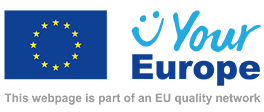Gender recognition
Content
What is amending the register in relation to gender?
This is the step that allows a person to change the entry in the register relating to the person’s sex registered at birth. In most cases (although not necessarily), the modification is accompanied by a change of name to adapt it to the requested sex. The attribution of the new name, in any case, must be in accordance with the general rules on name changes.
Who can apply?
Any person of Spanish nationality over the age of sixteen may apply for it themselves at the Civil Registry.
Persons under sixteen years of age and persons over fourteen years of age may submit the application themselves, assisted in the procedure by their legal representatives and, if there is disagreement between the legal representatives and the minor, a legal guardian will be appointed.
Persons with disabilities may also apply to modify the entry on the person’s sex in the register, with the support measures that they need.
Persons under the age of 14 and over 12 years of age may apply for a modification subject to authorisation from a court.
Necessary requirements
As of the entry into force of Law 4/2023, of 28 February, for the real and effective equality of trans people and for the guarantee of the rights of LGTBI people (2 March 2023)![]() , it is no longer necessary to provide any medical or psychological report on non-conformity with the sex assigned in a birth registration, nor the prior modification of the person's appearance through medical, surgical or other procedures.
, it is no longer necessary to provide any medical or psychological report on non-conformity with the sex assigned in a birth registration, nor the prior modification of the person's appearance through medical, surgical or other procedures.
The procedure is initiated by submitting an application that includes, as appropriate, the new name chosen and the relevant identity data.
Where to apply
At any Civil Registry. The application can be submitted in person, or sent by registered mail.
Authorisation
On receipt of the application, the applicant will be invited to attend the Registry. At the Registry, the Registrar will record the applicant’s declaration of non-conformity with the sex entered in the birth registration, along with the request for modification, and the new name being chosen (except where the applicant wishes to keep their own name).
After this initial appearance, the applicant will be invited to attend again in a maximum period of three months to ratify their application and confirm their intention to proceed with their decision.
If the application is ratified in this second appearance, a decision will be given within a maximum period of one month from the date of the second appearance.
When does it come into effect?
The modification will take effect from its entry in the Civil Register and will enable the person to exercise all the rights inherent to their new status.
Modification of the register on a person’s sex is reversible. Therefore, when six months have passed since the registration, persons who have made such a modification may recover the original entry in the register on the person’s sex by following the same procedure.
Where to register
It should be noted that a new model of civil registration is being introduced, which, due to its complexity, is a gradual implementation. Therefore, during a transitional period, two systems will co-exist.
In civil registers that are not yet using the new Dicireg app, modifications will be entered in the civil register, where the birth registration of the person concerned was made, in the margin of the entry.
The applicant may also request the complete transfer of the registration page so that the modification will not be made public without special authorisation.
When the new Civil Registry model is fully implemented and the Dicireg app is in general use, the registries will be interoperable by then so the change will be made in the registry that handled the gender change procedure.
Información por Comunidades Autónomas





Andalucía Aragón Asturias, Principado de Balears, Illes Canarias Cantabria Castilla y León Castilla-La Mancha Cataluña Ciudad de Ceuta Ciudad de Melilla Comunitat Valenciana Extremadura Galicia Madrid, Comunidad de Murcia, Región de Navarra, Comunidad Foral de País Vasco Rioja, La
Legal and/or technical references
-
Law 4/2023, of 28 February, for the real and effective equality of trans people and for the guarantee of the rights of LGTBI people BOE-A-2023-5366 Law 4/2023, of 28 February, for the real and effective equality of trans people and for the guarantee of the rights of LGTBI people

-
Law 20/2011 on Civil Status

-
Decree of 14 November 1958 approving the Regulation of the Civil Register Law

-
Instruction of 26 May 2023, of the Directorate-General for Legal Security and Public Trust, on making changes to gender in the register as regulated by Law 4/2023, of 28 February, for the real and effective equality of trans persons and to guarantee the rights of LGTBI persons.

-
Civil Register

-
Main Civil Registers. Addresses and telephones











